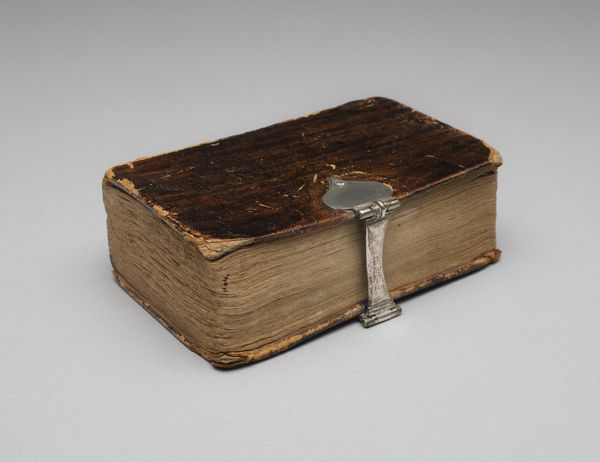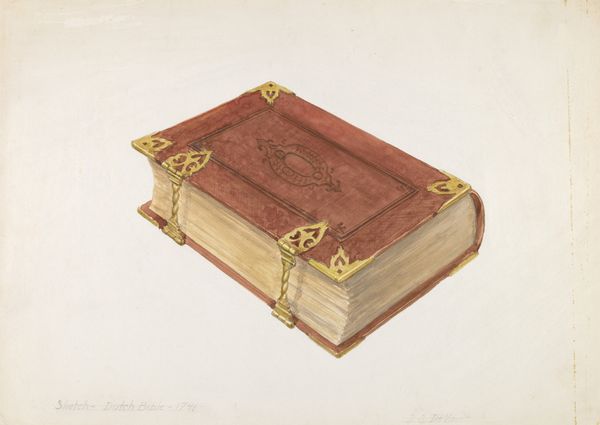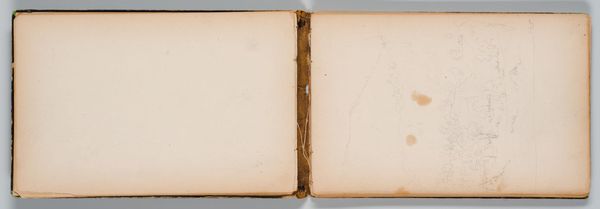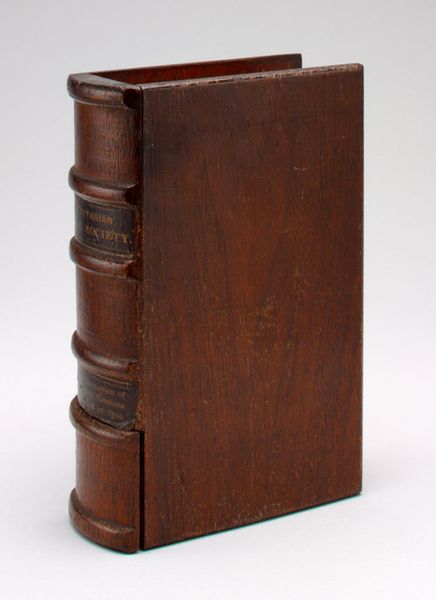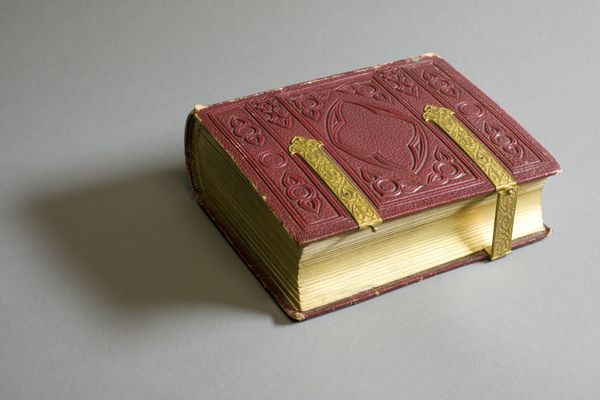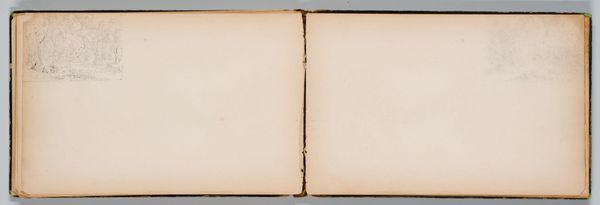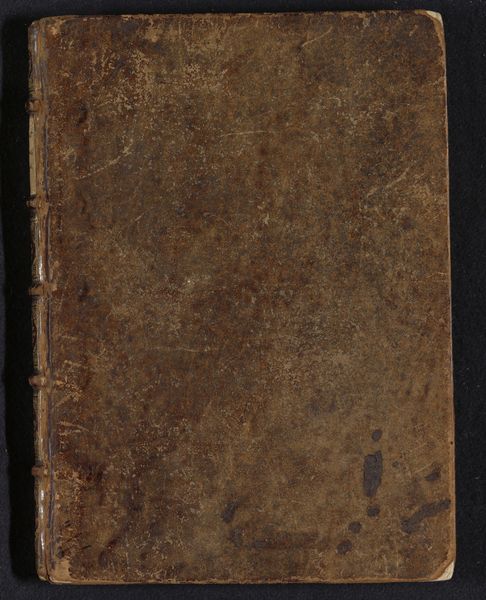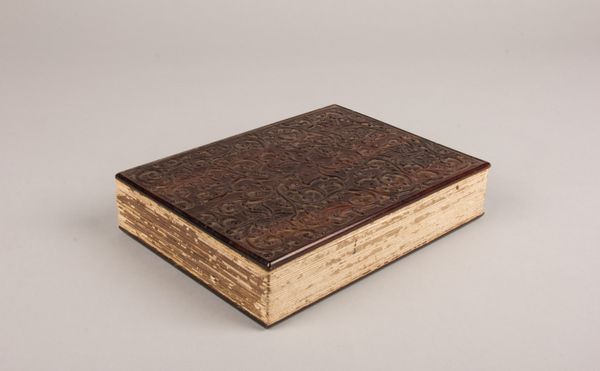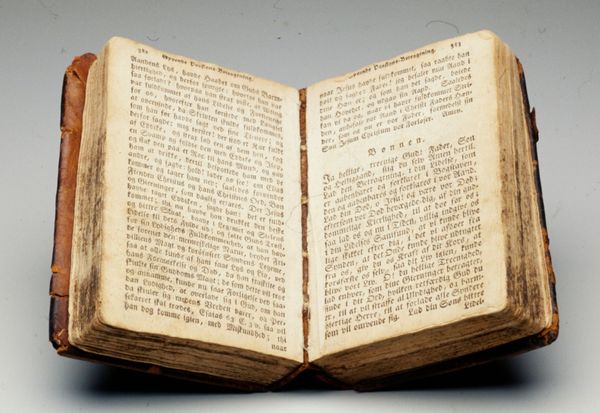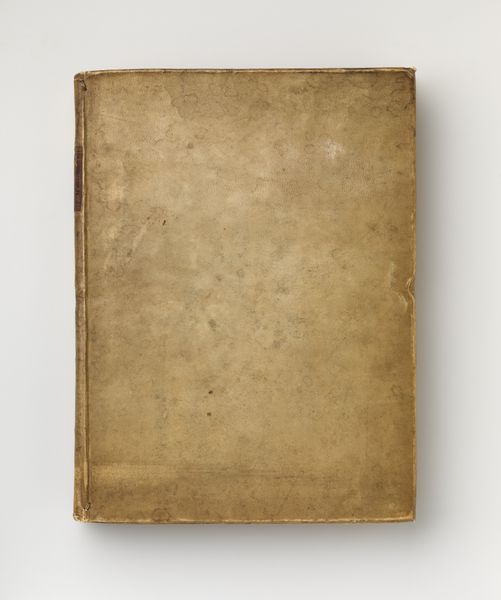
print, photography
#
still-life-photography
# print
#
book
#
photography
Dimensions: height 39.5 cm, width 27 cm, thickness 12 cm, width 56.5 cm, thickness 7 cm, length 11 cm
Copyright: Rijks Museum: Open Domain
Curator: This image showcases a photograph of the "Statenbijbel," or States Bible, dating back to 1637. It's currently held in the Rijksmuseum collection, and the photograph is attributed to Paulus Aertsz. van Ravesteyn. Editor: My first impression is its monumental heft; the photograph really emphasizes the tangible weight and presence of this historical object. I’m curious about its materials and the labor involved in its production. Curator: Precisely! Considering the context, this bible would have been a significant undertaking. The paper itself, likely handmade, required considerable resources. The binding, presumably leather and featuring those metallic clasps, speaks to skilled craftsmanship. Editor: Absolutely. Those clasps interest me particularly. They aren't merely functional; their ornamentation suggests the Bible's importance and the resources invested in presenting it. Were these Bibles widely accessible, or more symbols of status within a community? Curator: Initially, these would have been significant investments, possessed primarily by institutions and wealthier families. The "Statenbijbel" was important politically as well, intended as a unifying translation for the Dutch Republic. It aimed to solidify a national identity amidst religious and political strife. Editor: So, a deliberate project of cultural engineering, in a sense. Did the images, the printing, and its very physical presence aim to project power and authority? Curator: Undoubtedly. The standardization of the text, the impressive scale of the production… these were all designed to imbue the book with authority and encourage a sense of shared identity and belief. It's not just a religious text; it’s a cultural artifact shaping social discourse. Editor: Looking at the photo, I am again struck by how this physical object has borne witness to history, absorbing all the stories of people from generations past that have lived with it, learning from it. Curator: That's what I find fascinating—examining the complex interplay between religious, social, and political forces, and understanding how they materialize in objects like this Statenbijbel. Editor: For me, analyzing the choices around its physical construction opens up questions about cultural value and the weight placed upon certain kinds of knowledge during the seventeenth century. Curator: Indeed. Hopefully, our discussion has highlighted just a small part of why such an object—and images of such an object—can tell us a lot about the past.
Comments
rijksmuseum about 2 years ago
⋮
The Word of God – the Bible – is at the heart of the Dutch Reformed faith. In 1619 the States General, the Netherlands’ highest governing body, even commissions a new, ‘pure’ translation, which must be used in every church from then on. This explains why this Bible is called the ‘States Bible.’ The translation takes eighteen years. Every word is subject to lengthy debate. Changes are introduced up to the last moment, even in the opening lines. The translation is published only in 1637.
Join the conversation
Join millions of artists and users on Artera today and experience the ultimate creative platform.
